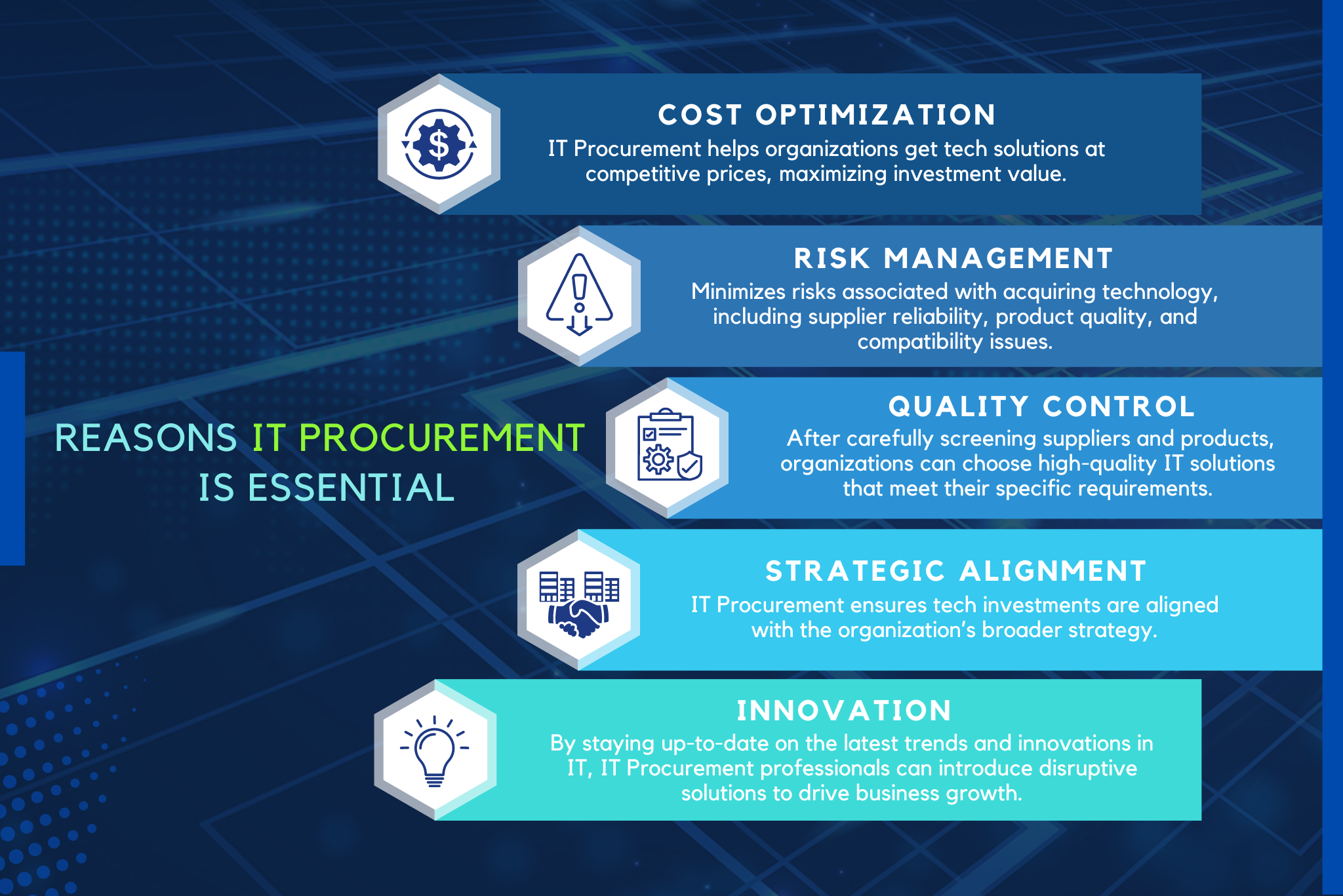Learn how Aerodoc became a key player in its customers’ tech sourcing processes in a year where IT investments are estimated to rise by 5.5%.
Large corporations are facing surprising challenges. People usually ignore the complex processes deployed by companies to optimize resources and costs. Behind every product or service, internal policies are set by businesses with a presence in dozens of countries and continents to manage fragmented operations into a coherent whole.
Currently, companies depend on technology to streamline operations, improve productivity, and stay ahead of the competition. Last year, consultancy firm Gartner estimated global IT spending to grow 3%, to $4.5 trillion. Forecasts for 2023 are even more positive, with a rise of 5.5%.
This reality has turned IT Procurement into a critical aspect of any global organization, as it helps companies ensure they get adequate tech solutions at optimal costs to support their business goals.
IT Procurement is the process or sourcing, acquiring, and managing IT products or services for organizations, from the computers used by employees in the office to apps, hardware, and operational systems. The first step to achieve this is to identify the company’s technological needs and then research the available options, assess suppliers, and negotiate contracts in order to make informed procurement decisions.
Let’s say that an organization must acquire more than 15,000 computers for its workforce scattered around the world. That company needs not only enough funds to buy them, but also physical and economic resources to distribute them around the world. But what if that besides computers, our company also needs systems, servers, networking equipment, racks, storage devices, and other physical infrastructure to support IT operations?

Estefanía Sisatzky, EVP of OPS & Customer Service at Aerodoc, explains that many Aerodoc customers ship or sell those tech solutions, so “they need to source them or buy them from multiple suppliers. Aerodoc acts as a consolidation hub for those purchases: Our customers share with us their purchase orders, tracking numbers, and the date when the shipment will be ready, and we help them track those shipments or coordinate pickups as each of them is ready,” she says.
Centralized vs. Decentralized IT Procurement
Each company has its own way to deal with IT Procurement, depending on managerial decision-making, organizational culture, resources, and other variables. There are two main approaches to IT Procurement:
- Centralized IT Procurement. A central team or department owns all procurement activities, handling every IT procurement process/decision for every department/business unit in the organization.
- Decentralized. Each department/business unit owns its own procurement activities.
The IT Procurement Process
Due to its complexity and the fact that it is occasionally made on a mass scale, IT Procurement is performed in stages.

- Understanding the organization’s tech needs. In this stage, relevant stakeholders are consulted to identify weaknesses, list requirements, and set desired results for technology investments.
- Market Research and Supplier Assessment. With clearly defined requirements, market research is done to identify potentially suitable suppliers and solutions according to the organization’s needs. This is where factors such as reputation, expertise, product quality, pricing, and customer service come into the picture.
- Request for Proposal (RFP) or Request for Quotation (RFQ). After potential suppliers are selected, organizations usually issue a detailed RFP/RFQ for them, outlining requirements, specifications, and assessment criteria for sellers to respond with full proposals.
- Proposal Assessment and Supplier Selection. During this stage, the organization reviews and assess the proposals or quotations it received, considering aspects such as suitability, pricing, supplier credibility, contract terms, and any additional value-added service included.
- Contract Negotiation and Finalization. This is the stage where terms and conditions, pricing, delivery dates, support services, and any legal arrangement needed are defined. Fair terms are needed to protect the company’s interests and provide flexibility for future scalability.
- Supplier Relationship Management. Once a contract is signed, continuous management of supplier relationships play a key role. This involves regular communications, supplier performance monitoring, quickly solving any issues or concerns, and fostering a collaborative partnership.
- Performance Monitoring and Assessment. After completing the procurement process, organizations must monitor the performance of the acquired solutions to ensure they meet expectations. Regular assessments help identify improvement areas, potential updates or adjustments needed to maximize the return on any technology investment.
IT Procurement + IOR
As companies are facing increasingly complex IT Procurement processes, Aerodoc works with its customers to ship those increasingly in-demand tech solutions around the world.
According to Sisatzky, Aerodoc can intervene in several ways. “Sometimes, customers ask us to repackage the cargo according to each individual delivery point’s needs, so, if they do centralized procurement for three or four locations in different countries, each of those will be fitted with different components received by Aerodoc. To do that, the customer sends us a pick list with instructions to set up each site and Aerodoc handles inventory, order segregation, and setting up each site for its subsequent delivery.”

In some occasions, according to Sisatzky, Aerodoc receives specialists like technicians or Project Managers in charge of preparing the sites. “In those cases, we become a consolidation node, where experts work in shipment segregation or even in more complex pre-configuration or configuration tasks.”
Thanks to this, Aerodoc becomes a pillar for companies selling tech infrastructure and devices, as it provides them with cost savings while supporting every customer’s sourcing policies and providing value-added services.
If you are a tech integrator/reseller and would like to learn more about our services, please contact our team of experts.




